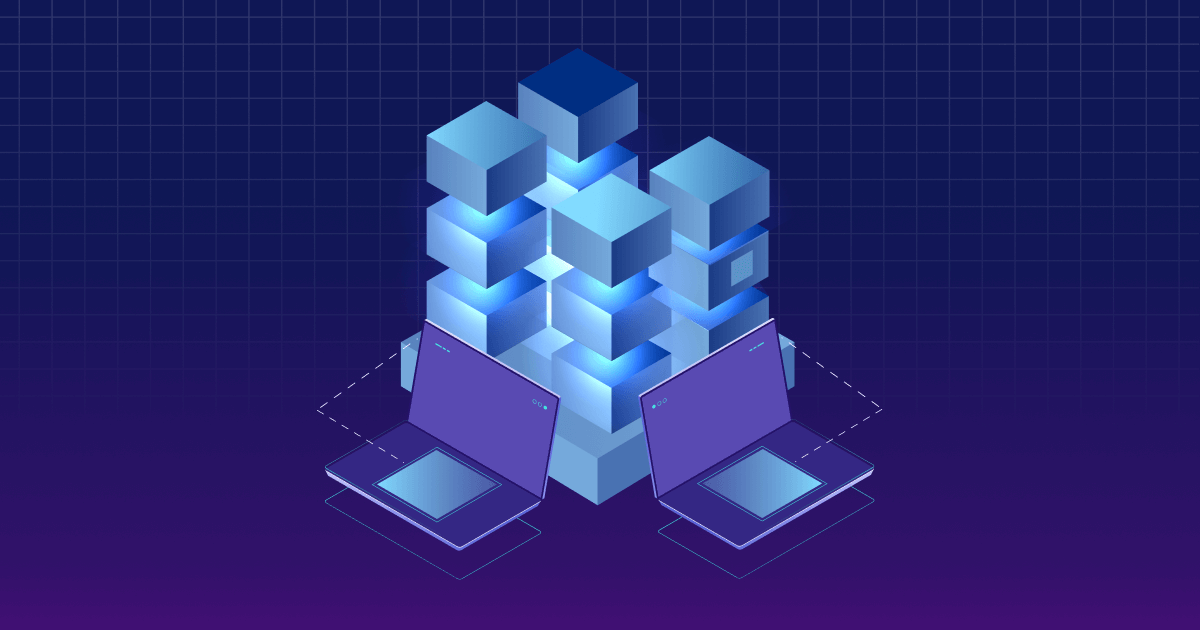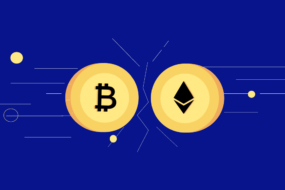
With the rise of blockchain technology, numerous open-source platforms have emerged, each with unique features and capabilities.
If you are a developer, choosing the right blockchain platform is vital for the success of your projects.
But worry not, as you have come to the right place.
From Ethereum to Hyperledger Fabric, we will examine each platform’s features, pros and cons, and use cases. By the end of this article, you will have a comprehensive understanding of the best open-source platforms available.
So, let’s dive in and explore the exciting world of open-source blockchain platforms!
What Are Open-Source Blockchain Platforms?
Open-source blockchain platforms are decentralized systems that use open-source code that is freely available to the public. Using open-source code allows for transparency, collaboration, and innovation within the blockchain ecosystem.
These platforms provide a foundation for building and deploying decentralized applications (dApps) and smart contracts.
The beauty of these platforms lies in their collaborative nature. It allows developers worldwide to work together to create innovative tools. They can build upon existing projects by sharing their code and ideas, making them better and more efficient.
Why Use Open-Source Blockchain Platforms?
Open-source blockchain platforms are becoming increasingly popular because of their many benefits.
The most significant benefit is the transparency and security that these platforms offer. The code for these platforms is open for everyone to view and modify. Thus, the community can easily detect and fix any errors or vulnerabilities.
Another significant advantage is their flexibility. You can use them to build a wide range of dApps not controlled by a single entity. This makes them ideal for use cases such as financial transactions, identity verification, etc.
These platforms also offer a high level of customization. Developers can modify the source code to suit their needs without relying on a 3rd party vendor.
Lastly, these platforms are cost-effective. Anyone can use them, regardless of budget. This makes them accessible to small businesses, startups, and even individuals who want to build dApps.
Top 10 Open-Source Blockchain Platforms
1. Ethereum
Vitalik Buterin developed Ethereum in 2014. It’s one of the most popular platforms as it introduced the smart contract functionality.
Features
- Native Token: Ether (ETH) is the native crypto of Ethereum. It is used to pay for transactions and incentivize developers.
- Smart contract functionality: It allows for automated transactions and complex business logic to be executed in a secure and auditable manner.
- Decentralized applications (dApps): Ethereum is currently being utilized to build around 50,000 dApps.
Pros
- Flexibility: The smart contract functionality allows for greater flexibility and customization of business logic.
- Large developer community: Ethereum’s large and active developer community is constantly working on improving the platform.
Use cases
- Decentralized Finance (DeFi): Ethereum is an ideal platform for DeFi applications such as lending, borrowing, and trading.
- Supply chain management: Ethereum’s transparency and immutability make it suitable for applications requiring secure tracking and verifying goods.
- Healthcare: Ethereum can be used to build healthcare applications that ensure patient data privacy and security.
2. Hyperledger Fabric
Hyperledger Fabric is an open-source blockchain platform developed by the Linux Foundation. It is designed explicitly for enterprise-level applications.
Features
- Private channels: Hyperledger Fabric allows users to create private channels for secure communication between select participants.
- Modular architecture: Hyperledger Fabric’s modular architecture allows for greater flexibility and customization of blockchain applications.
Pros
- High level of security: Hyperledger’s permissioned blockchain architecture provides increased security and privacy.
- Flexibility: Hyperledger’s modular architecture makes it easier for businesses to build blockchain applications that meet their needs.
- Scalability: Hyperledger Fabric can handle many transactions per second (TPS), making it suitable for enterprise-level applications.
Cons
- Complexity: Hyperledger Fabric can be complex to set up and maintain.
- Learning curve: Hyperledger Fabric requires technical expertise to use effectively.
Use Cases
- Financial Services: Hyperledger Fabric is suitable for financial services applications such as trade finance and asset management.
- Healthcare: Hyperledger Fabric can be used to build secure and private healthcare applications that ensure patient data privacy and security.
3. Corda
Corda is a distributed ledger technology (DLT) that allows for secure and confidential transactions between participants in a network. It was developed by R3.
Features
- Smart contract functionality
- Confidentiality: Corda allows for confidential transactions between participants in a network.
Pros
- Security: Corda’s confidentiality features provide high security and privacy.
- Efficiency: Corda allows faster and more efficient transactions.
Cons
- Learning curve: Corda requires high technical expertise to use it effectively.
- Limited network size: Corda’s network is limited to a few participants, which may not be suitable for larger businesses.
Use Cases
- Healthcare: Corda is suitable for healthcare applications that require secure patient data sharing.
- Supply chain management: Corda can track the movement of goods and ensure their authenticity and quality.
4. Stellar
Stellar was developed in 2014 by Jed McCaleb and Joyce Kim. It has since become famous for payment applications, facilitating cross-border payments, and money transfers.
Features
- Native Token: Lumens (XLM)
- Stellar Consensus Protocol (SCP): SCP allows for decentralized validation and consensus of transactions.
Pros
- Low transaction fees: Stellar’s transaction fees are much lower (0.00001 XLM), making it ideal for small transactions.
Cons
- Limited smart contract functionality: Stellar’s smart contract functionality is more limited than other platforms.
- Centralized control: The Stellar Development Foundation controls the network, which may raise concerns for some users.
Use Cases
- Cross-border and micropayments: Stellar is ideal for cross-border payments, remittances, and micropayments due to its low fee.
- Tokenization: Stellar can be used to tokenize assets like real estate or other investments.
5. EOSIO
EOSIO is designed to provide high performance, scalability, and flexibility for developers.
It was developed by Block.one and released in 2018.
Features
- Native Token: EOS (EOS).
- Delegated Proof of Stake (DPoS): EOSIO uses a DPoS consensus mechanism that allows for faster and more efficient block validation.
- High transaction speeds: All transactions are completed within 30ms.
- Scalability: EOSIO’s architecture allows for horizontal scaling. It means additional nodes can be added to the network without affecting performance.
Pros
- High performance: EOSIO’s high transaction speeds and scalability make it ideal for applications that require high performance.
- Flexibility: EOSIO’s flexible architecture allows a wide range of applications to be built on the platform.
- Large developer community: EOSIO’s large and active developer community is constantly working on improving the platform.
Cons
- Centralized control: A few block producers control EOSIO’s network, which may raise concerns for some users.
Use cases
- Identity verification: EOSIO can be used to build secure and private identity verification systems that ensure user privacy and security.
6. IOTA
IOTA is an open-source distributed ledger technology (DLT) that uses a unique architecture called the ‘Tangle.’
It was developed in 2015 by the IOTA Foundation and is designed to enable feeless transactions between devices in the Internet of Things (IoT) ecosystem.
Features
- Native Token: IOTA (MIOTA)
- The Tangle: IOTA’s Tangle architecture allows for feeless and fast transactions without the need for miners.
- Scalability: IOTA’s architecture allows for horizontal scaling.
- Quantum resistance: IOTA’s cryptography is quantum-resistant, designed to be secure against future quantum computing attacks.
Pros
- Feeless transactions
- High scalability: IOTA’s architecture allows for increased scalability without affecting performance.
Cons
- Centralization concerns: IOTA’s network is controlled by the IOTA Foundation.
- Limited smart contract functionality
Use Cases
- Internet of Things (IoT): IOTA’s feeless transactions make it ideal for microtransactions in IoT applications.
- Decentralized marketplaces: IOTA can be used to build decentralized marketplaces that enable feeless transactions between traders.
7. Tezos
Tezos is a self-amending blockchain platform that uses a liquid proof-of-stake consensus algorithm to validate transactions. It was developed by Arthur and Kathleen Breitman in 2018.
It is designed to provide a more flexible and transparent governance model for blockchain platforms.
Features
- Native Token: Tezos (XTZ)
- Self-amending protocol: Tezos has a unique self-amending protocol that allows upgrades and changes to be made to the network without requiring a hard fork.
- Liquid proof-of-stake: Tezos uses a liquid proof-of-stake consensus algorithm for faster and more efficient block validation.
- Formal verification: Tezos uses formal verification to ensure the correctness of smart contracts and other code on the platform.
Pros
- Flexible governance model: Tezos’ self-amending protocol and liquid PoS consensus algorithm provide a more flexible governance model.
- Large developer community: Tezos’s growing developer community is constantly working on improving the platform.
Cons
- Limited adoption: Tezos is still a relatively new platform and has yet to gain widespread adoption.
Use Cases
- Digital assets: Tezos can be used to create and manage digital assets, such as cryptocurrencies, tokens, and other financial instruments.
8. TRON
TRON aims to provide a platform for creating dApps and sharing digital content.
It was founded by Justin Sun in 2017 and has gained significant attention due to its focus on the entertainment industry.
Features
- Native Token: TRON (TRX)
- High transaction speed: TRON’s blockchain can handle over 2,000 TPS.
- PoS consensus algorithm: TRON uses a PoS consensus algorithm that allows for faster and more efficient block validation.
- Decentralized storage: TRON’s decentralized storage allows for the secure and transparent sharing of digital content.
Pros
- Entertainment industry focus: TRON’s focus on entertainment makes it a valuable tool for content creators and publishers.
- Scalability: TRON’s architecture allows for horizontal scaling.
Cons
- Centralization concerns: TRON’s network is controlled by a group of validators, which may raise concerns for some users.
Use Cases
- Content sharing: TRON’s decentralized storage makes it a valuable platform for sharing and monetizing digital content, such as music, videos, and other media.
- Gaming applications: TRON’s high transaction speed and focus on the entertainment industry make it a valuable platform for building gaming applications.
9. Waves
Waves offer various tools and services for building dApps and launching custom digital assets.
It was established in 2016 by Alexander Ivanov and has gained popularity due to its easy-to-use interface and focus on user-friendliness.
Features
- Native Token: Waves (WAVES)
- User-friendly interface: Waves has an easy-to-use interface that makes it accessible to users without programming knowledge.
- Custom digital asset creation: Waves allows users to create custom digital assets. It can be used for various purposes, such as crowdfunding, loyalty programs, and tokenization of assets.
- Decentralized exchange: Waves has a built-in decentralized exchange that allows users to trade digital assets securely and transparently.
Pros
- Easy-to-use: Waves’ user-friendly interface makes it easy for beginners to build dApps and launch custom digital assets.
Cons
- Limited smart contract functionality: Waves’ smart contract functionality is limited compared to other blockchain platforms.
Use Cases
- Crowdfunding: Waves’ custom digital asset creation feature allows for the creation of custom tokens for crowdfunding purposes.
- Loyalty programs: Waves can be used to create custom digital assets for loyalty programs and other incentive-based systems.
- Asset tokenization: Waves’ custom digital asset creation feature can be used to tokenize assets, such as real estate, art, and other valuable items.
10. Bitcoin
Bitcoin is a decentralized digital currency that operates on a peer-to-peer (P2P) network. It enables secure and transparent transactions without intermediaries like banks or financial institutions.
It was created in 2009 by an unknown person or group under the pseudonym of Satoshi Nakamoto.
Features
- Native Token: Bitcoin (BTC)
- Decentralized: Bitcoin is a highly decentralized network.
- Secure: Bitcoin uses advanced cryptographic techniques to secure transactions and prevent fraud.
- Limited Supply: There will only be 21 million bitcoins, meaning it has a finite supply.
Pros
- Censorship-resistant: It is resistant to censorship as its highly decentralized.
- Transparency: All transactions on the Bitcoin network are transparent and publicly accessible.
- Security: Bitcoin’s advanced cryptographic techniques make it highly secure and resistant to fraud.
Cons
- Volatility: Bitcoin’s price is highly volatile, which makes it a risky investment.
- Scalability: The Bitcoin network can only process a limited number of TPS of 7.
- Energy Consumption: The mining process required to generate new BTCs consumes significant energy. According to estimations, Bitcoin consumes electricity at an annualized rate of 127 terawatt-hours (TWh).
Use Cases
- Asset Class: Bitcoin has become a popular investment asset. Many investors see it as a store of value and a hedge against inflation.
- Peer-to-peer Transactions: Bitcoin can send and receive money without intermediaries like banks or financial institutions.
- Payment Method: Bitcoin can purchase goods and services online. Over 15,000 businesses worldwide accept BTC as a payment method.
How to Choose an Open-Source Blockchain Platform?
Choosing the right open-source blockchain platform can be challenging, given the available options.
1. Use Case
Determine the specific use case for which you require the blockchain platform. For instance, if you need a platform for financial transactions, consider Ethereum. In contrast, if you require a platform for supply chain management, you may consider Corda.
2. Consensus Mechanism
The consensus mechanism used by the blockchain platform should be secure and efficient. Different platforms use different consensus mechanisms, such as Proof of Work (PoW), Proof of Stake (PoS), and Practical Byzantine Fault Tolerance (PBFT).
3. Scalability
Consider the scalability of the blockchain platform, particularly if you expect a high volume of transactions. Some platforms, such as EOSIO, can handle high transaction volumes. Other platforms, such as Bitcoin, have scalability challenges.
4. Security
Security is critical when choosing a blockchain platform. Look for platforms with a strong security track record and provide features such as cryptography and encryption to protect data.
5. Development Resources
Look for blockchain platforms with a strong developer community and provide ample documentation, tools, and resources to help you build and deploy applications.
6. Interoperability
Consider whether the blockchain platform is interoperable with other platforms and systems. It can be vital if you need to integrate with existing applications.
7. Cost
Finally, consider the cost of using the blockchain platform, including transaction fees, maintenance, and development resources.
Conclusion
Developers looking to create dApps have various options, each with unique features and capabilities.
From Ethereum’s smart contract functionality to Corda’s privacy features, developers can select a platform that best fits their needs and requirements.
By using open-source platforms, developers can leverage the power of blockchain without the need for proprietary software.
As the blockchain ecosystem matures, we expect to see more innovative and powerful open-source platforms emerge.




